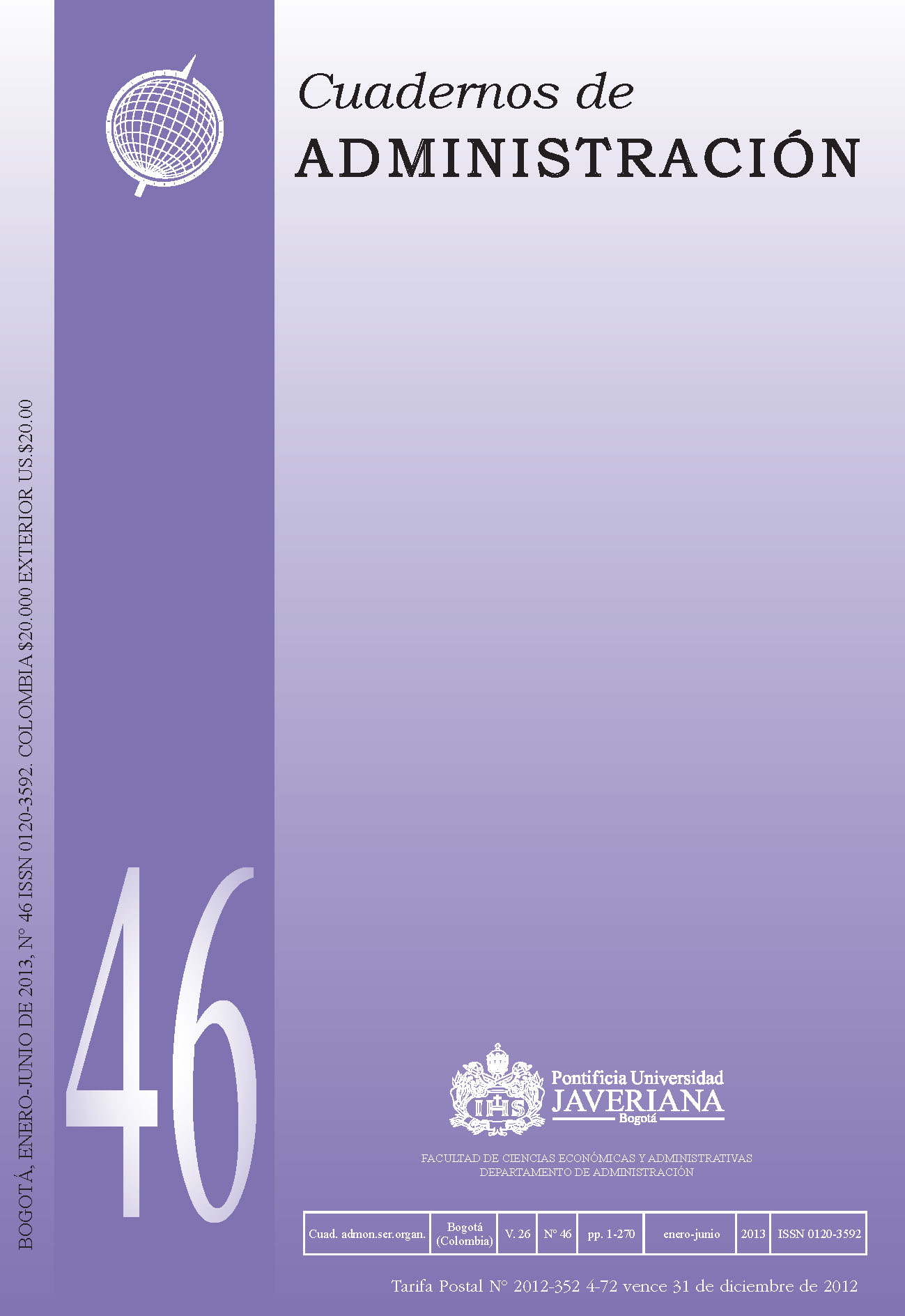Comparing Means can be Mean: Quantifying the Performance of Students at Standardized Exit Exams
##plugins.themes.bootstrap3.article.details##
The current work introduces an alternative analysis approach to standardized exam results, which have been so far scrutinized by means of ranking systems based on arithmetic mean comparisons. The Propensity Score Matching technique is applied to compare the results of equivalent students in the Colombian field-specific college exit exam (ECAES), which was introduced by the National Education Ministry in 2003. The specific case of the students enrolled at Universidad Javeriana’s Business Administration Program is addressed, but the methodology can be easily applied to other programs and universities. The results show a strong treatment effect of attending Universidad Javeriana on the performance in this exam. In contrast to the results of previous ranking studies based on simple average data, students from Universidad Javeriana were found to perform better than equivalent students. This shows that the construction and interpretation of those rankings might be flawed.
higher education, exit exams, economics of education, impact evaluationeducación superior, exámenes de Estado, economía de la educación, evaluación de impactoeducação superior, exames de Estado, economia da educação, avaliação de impacto
Allcott, H. and Ortega, D. (2009). The performance of decentralized school systems: Evidence from Fe y Alegría in Venezuela. World Bank Policy Research Working Paper Series.
Asociación Colombiana de Facultades de Administración – ASCOLFA (2006). Examen de estado para la calidad de la educación – ECAES en administración. Retrieved on April 10, 2012, from: http://www.ascolfa.edu.co/archivos/ ECAES_2006_-_ANALISIS_DE_RESULTADOS_-_ASCOLFA.pdf
Becker, W. E. (1997). Teaching economics to undergraduates. Journal of Economic Literature, 35 (3), 1347-1373.
Buela-Casal, G., Gutiérrez-Martínez, O., BermúdezSánchez, M. P. and Vadillo-Muñoz, O. (2007). Comparative study of international academic rankings of universities. Scientometrics, 71 (3), 349-365.
Caliendo, M. and Kopeinig, S. (2008). Some practical guidance for the implementation of propensity score matching. Journal of Economic Surveys, 22 (1), 31-72.
Card, D., and Krueger, A. (1994). The economic return to school quality: A partial survey. Industrial Relations Section Working Paper 334: Princeton University.
Carey, K. (2006). College rankings reformed: The case for a new order in higher education. Education Sector. Retrieved from http://www.educationsector.org/publications/college-rankingsreformed
Dehejia, R. H. and Wahba, S. (2002). Propensity score-matching methods for nonexperimental causal studies. Review of Economics and Statistics, 84 (1), 151-161.
Harvey, L. (2008). Rankings of higher education institutions: A critical review. Quality in Higher Education, 14 (3), 187-207.
Heinrich, C., Maffioli, A. and Vázquez, G. (2010). A primer for applying propensity-score matching. Working paper 1005. Inter-American Development Bank, Office of Strategic Planning and Development Effectiveness (SPD).
Instituto Colombiano para la Evaluación de la Educación (ICFES) (2011). ECAES and Saber11 Databases. Programa de Fomento a la Investigación.
Kennedy, P. (2003). A guide to econometrics. The MIT press. 5th Edition.
Popham, W. J. (1999). Why standardized tests don’t measure educational quality. Educational Leadership, 56, 8-16.
Revista Dinero (2007). Universidades ¿dan la talla? Retrieved on March 15, 2012, from: http://www.dinero.com/caratula/edicion-impresa/articulo/ universidades-dan-talla/32928
Saavedra, J. E. (2007). Selective universities and skill acquisition: Evidence from Colombia. Working Paper. Harvard University.
Saavedra, J. E. (2009). The learning and early labor market effects of college quality: A regression discontinuity analysis. Universidad de los Andes, School of Government.
Tambi, A. M. B. A., Ghazali, M. C. and Yahya, N. B. (2008). The ranking of higher education ins titutions: A deduction or delusion?. Total Quality Management and Business Excellence, 19 (10), 997-1011.
Tofallis, C. (2012). A different approach to university rankings. Higher Education, 63 (1), 1-18.
Torres, O. (2007). Panel data analysis: Fixed and random effects. Data and Statistical Services, Princeton University. Retrieved on April 10, 2012, from: http://www.princeton.edu/~otorres/ Panel101.pdf
Universidad Javeriana (2011). Programa de administración de empresas. Retrieved on March 15, 2012, from: http://www.javeriana.edu.co/fcea/
Yaffee, R. (2003). A primer for panel data analysis. Connect - Information Technology at New York University. Retrieved on April 10, 2012, from: http://www.nyu.edu/its/pubs/connect/fall03/ pdfs/yaffee_primer.pdf


